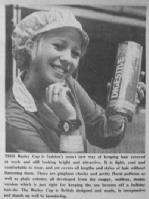How did the A.E.U. address women's health and welfare interests?
An annual conference solely for women was set up in 1943 in order to create a forum in which general issues and those specifically concerned with women could be discussed by female members. The resolutions that were passed at the women’s conference would then be forwarded to the National Executive of the A.E.U. for consideration.
Though a broad range of issues were covered at the conferences the focus often tended to be on gaining equal pay, with sometimes three or four resolutions on wages being passed, but this is not to say health and welfare were ignored. By establishing a woman’s conference very varied health and welfare issues were raised including provision of nurseries and the wearing of jewellery in the workplace, which were unlikely to been put forward at a male dominated conference.

The A.E.U. also launched publications and leaflets targeted at women workers. Though the primary intention was to encourage non-members to join the trade union the publications did also include detailed articles on the economic state of Britain, arguments for the state provision of nurseries and also health and safety issues.
Publications such as the Woman’s Angle Newsletter and later The Way: For Women and Youth tried to increase their appeal to women by featuring fashion and beauty features. This meant that one publication could contain articles ranging from a criticism of the apartheid government in South Africa to the most fashionable summer clothes. These articles, mostly written by women, provided another avenue through which female members of the union could express their views on health and welfare.
All positions within the union were made open for women in 1950, giving women more of a chance to voice their concerns over trade union issues and allowing health and welfare issues specific to women to be raised. Yet alongside the pursuit of equality for women, appeals to more feminine ideals continued. Thus in 1965, the Chairman of the A.E.U. expressed his hope that 'the women of this country (never) lose their femininity'. (MSS.259/ASE/4/15/65 Annual Women’s Conference Report, 1965 p. 9)
